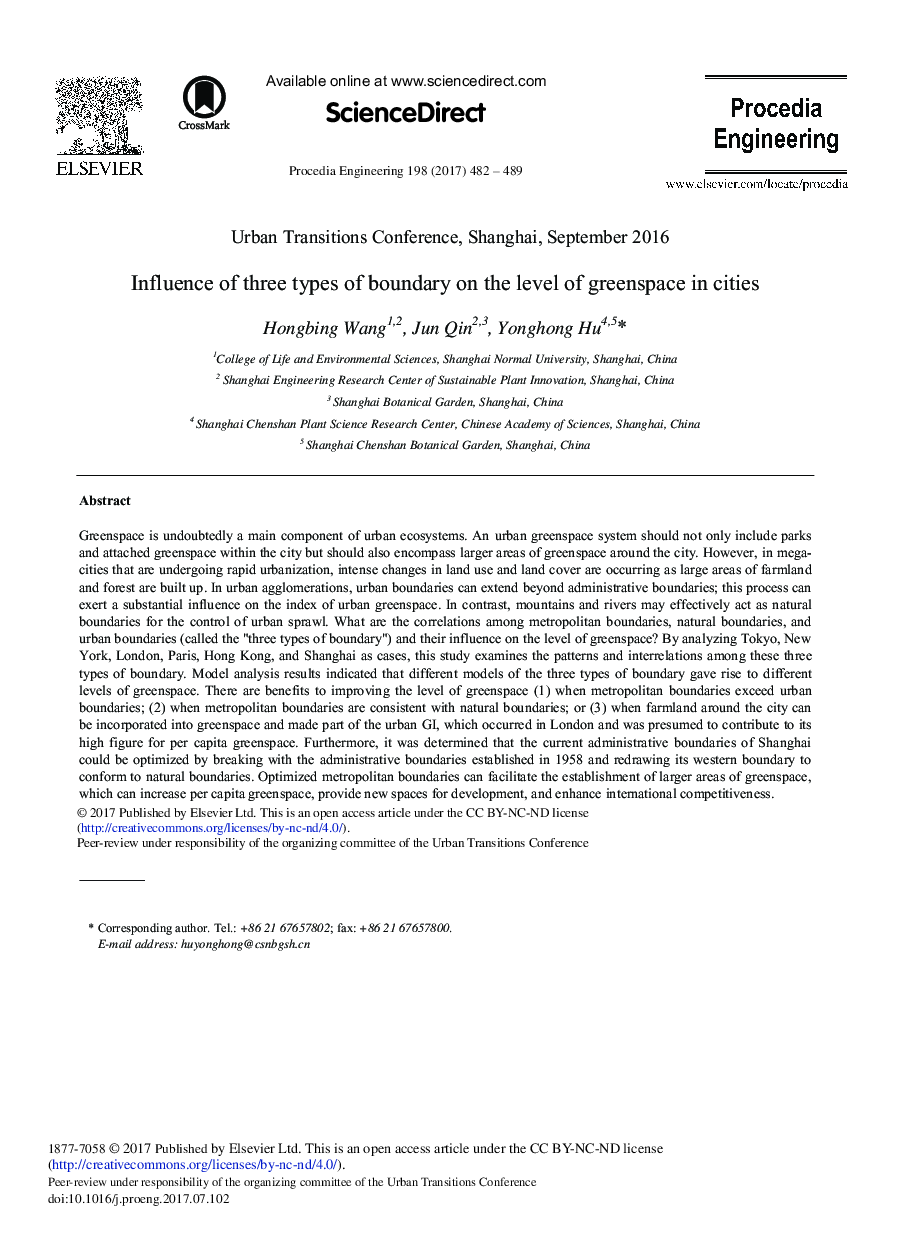| کد مقاله | کد نشریه | سال انتشار | مقاله انگلیسی | نسخه تمام متن |
|---|---|---|---|---|
| 5027412 | 1470628 | 2017 | 8 صفحه PDF | دانلود رایگان |
عنوان انگلیسی مقاله ISI
Influence of Three Types of Boundary on the Level of Greenspace in Cities
ترجمه فارسی عنوان
تأثیر سه نوع مرز بر سطح فضای سبز در شهرها
دانلود مقاله + سفارش ترجمه
دانلود مقاله ISI انگلیسی
رایگان برای ایرانیان
کلمات کلیدی
مرز شهری، مرز شهری، مرز طبیعی زیرساخت سبز شهری،
موضوعات مرتبط
مهندسی و علوم پایه
سایر رشته های مهندسی
مهندسی (عمومی)
چکیده انگلیسی
Greenspace is undoubtedly a main component of urban ecosystems. An urban greenspace system should not only include parks and attached greenspace within the city but should also encompass larger areas of greenspace around the city. However, in mega-cities that are undergoing rapid urbanization, intense changes in land use and land cover are occurring as large areas of farmland and forest are built up. In urban agglomerations, urban boundaries can extend beyond administrative boundaries; this process can exert a substantial influence on the index of urban greenspace. In contrast, mountains and rivers may effectively act as natural boundaries for the control of urban sprawl. What are the correlations among metropolitan boundaries, natural boundaries, and urban boundaries (called the “three types of boundary”) and their influence on the level of greenspace? By analyzing Tokyo, New York, London, Paris, Hong Kong, and Shanghai as cases, this study examines the patterns and interrelations among these three types of boundary. Model analysis results indicated that different models of the three types of boundary gave rise to different levels of greenspace. There are benefits to improving the level of greenspace (1) when metropolitan boundaries exceed urban boundaries; (2) when metropolitan boundaries are consistent with natural boundaries; or (3) when farmland around the city can be incorporated into greenspace and made part of the urban GI, which occurred in London and was presumed to contribute to its high figure for per capita greenspace. Furthermore, it was determined that the current administrative boundaries of Shanghai could be optimized by breaking with the administrative boundaries established in 1958 and redrawing its western boundary to conform to natural boundaries. Optimized metropolitan boundaries can facilitate the establishment of larger areas of greenspace, which can increase per capita greenspace, provide new spaces for development, and enhance international competitiveness.
ناشر
Database: Elsevier - ScienceDirect (ساینس دایرکت)
Journal: Procedia Engineering - Volume 198, 2017, Pages 482-489
Journal: Procedia Engineering - Volume 198, 2017, Pages 482-489
نویسندگان
Hongbing Wang, Jun Qin, Yonghong Hu,
